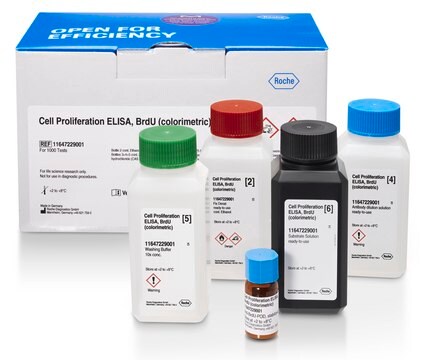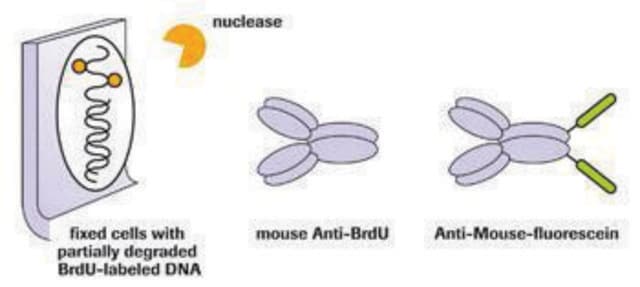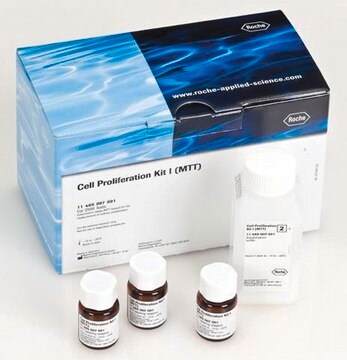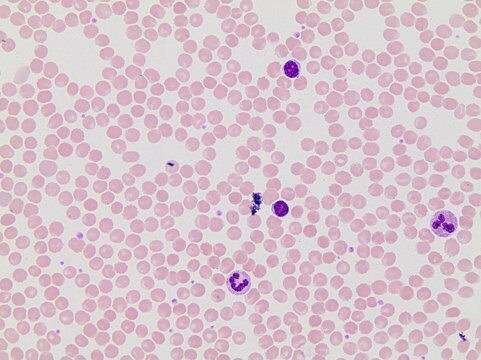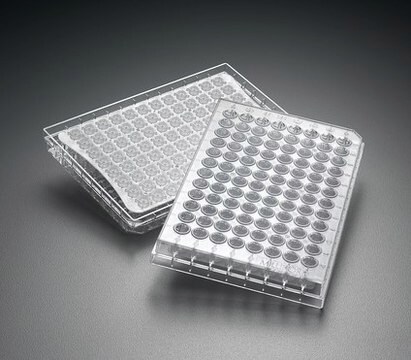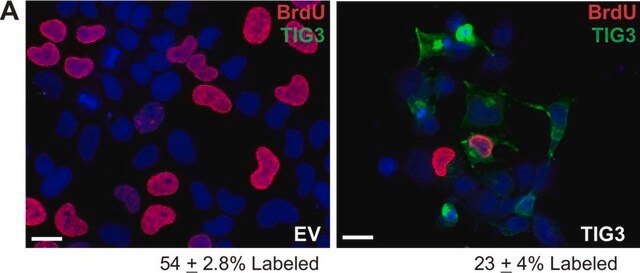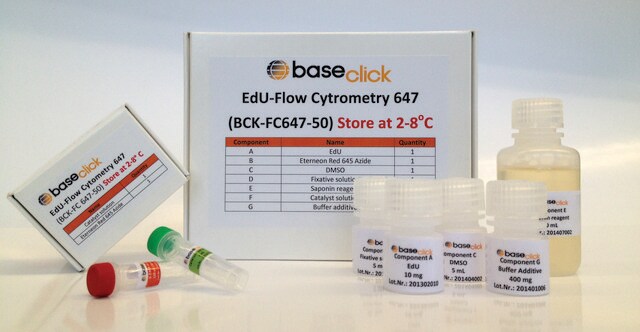おすすめの製品
使用法
sufficient for ≤1,000 tests
品質水準
メーカー/製品名
Roche
テクニック
ELISA: suitable
検出方法
chemiluminescent
輸送温度
wet ice
保管温度
2-8°C
関連するカテゴリー
詳細
特異性
アプリケーション
- ReNおよび一次星状細胞のブロモデオキシウリジン(BrdU)増殖アッセイ
- BrdU取り込みアッセイを用いて神経芽細胞腫細胞の増殖に対するイマチニブの影響を試験するため
- 膵臓の患者由来初代細胞株におけるBrdU取り込みを用いて細胞周期阻害に対するパルボシクリブの影響を確認するため
- 増殖因子とサイトカインにより誘発される細胞増殖の検出および定量
- 環境および生物医学研究、ならびに食品、化粧品、および製薬産業における細胞増殖に及ぼす様々な化合物の阻害または刺激効果の測定
- マイトジェンまたは抗原が刺激したリンパ球の免疫反応性の測定
- 医学研究における様々な細胞増殖抑制薬に対する腫瘍細胞の化学感受性の分析
包装
構成
- BrdU標識試薬、1,000x濃度
- FixDenat
- Anti-BrdU-POD 4.抗体希釈溶液
- 洗浄バッファーPBS、10x濃度
- 基質成分A
- 基質成分B
その他情報
キットの構成要素のみ
- BrdU Labeling Reagent
- FixDenat ready-to-use
- Anti-BrdU-peroxidase antibody
- Antibody Dilution Solution ready-to-use
- ready-to-use 10x concentrated
- Substrate Component A
- Substrate Component B
シグナルワード
Danger
危険有害性情報
危険有害性の分類
Eye Irrit. 2 - Flam. Liq. 2 - Muta. 1B - Skin Sens. 1
保管分類コード
3 - Flammable liquids
WGK
WGK 1
この製品を見ている人はこちらもチェック
資料
Regulation of the cell cycle involves processes crucial to the survival of a cell, including the detection and repair of genetic damage as well as the prevention of uncontrolled cell division associated with cancer. The cell cycle is a four-stage process in which the cell 1) increases in size (G1-stage), 2) copies its DNA (synthesis, S-stage), 3) prepares to divide (G2-stage), and 4) divides (mitosis, M-stage). Due to their anionic nature, nucleoside triphosphates (NTPs), the building blocks of both RNA and DNA, do not permeate cell membranes.
Cell based assays for cell proliferation (BrdU, MTT, WST1), cell viability and cytotoxicity experiments for applications in cancer, neuroscience and stem cell research.
Cell based assays for cell proliferation (BrdU, MTT, WST1), cell viability and cytotoxicity experiments for applications in cancer, neuroscience and stem cell research.
ライフサイエンス、有機合成、材料科学、クロマトグラフィー、分析など、あらゆる分野の研究に経験のあるメンバーがおります。.
製品に関するお問い合わせはこちら(テクニカルサービス)